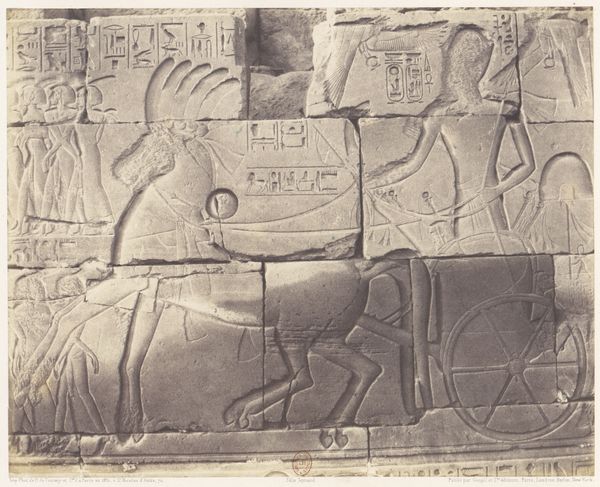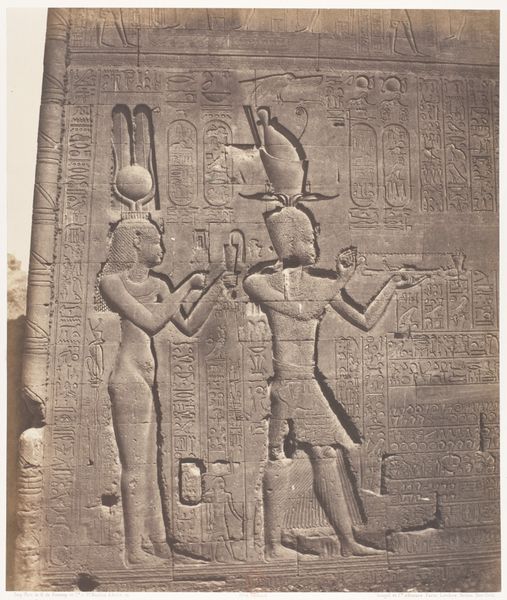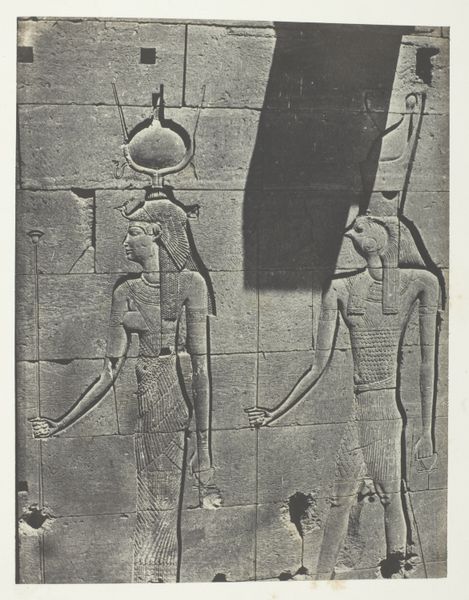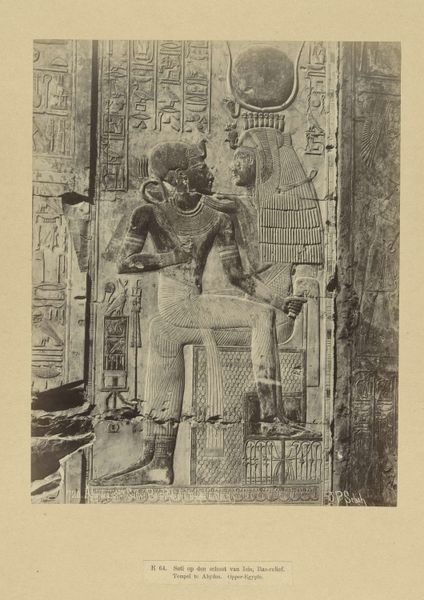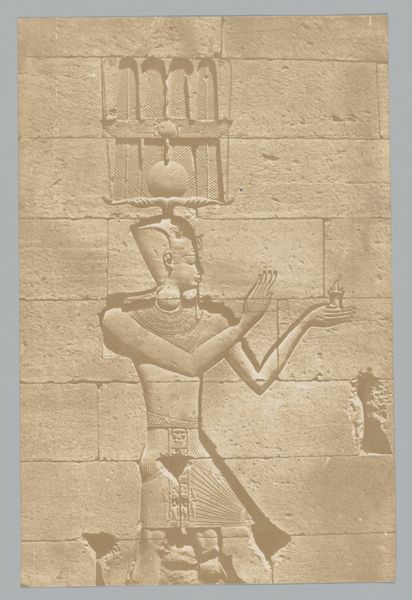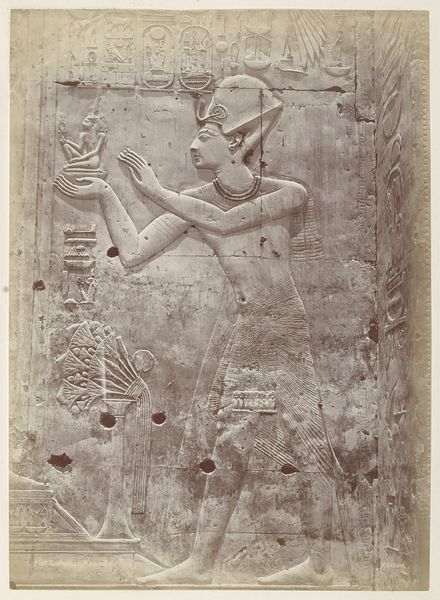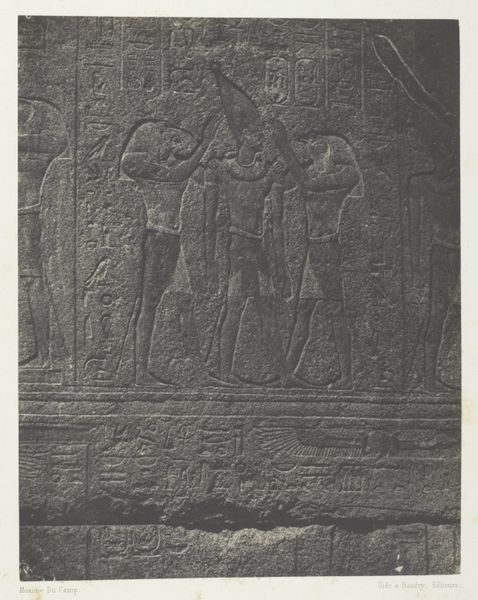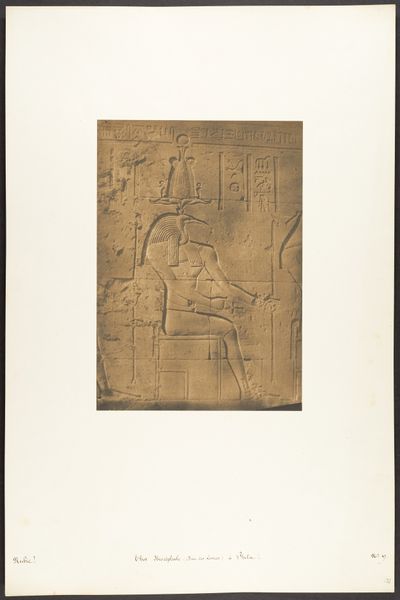
Grand Temple d'Isis à Philoe, Tôth Ibiocéphale; Nubie Possibly 1849 - 1852
0:00
0:00
carving, print, relief, paper, photography
#
portrait
#
16_19th-century
#
carving
# print
#
war
#
relief
#
ancient-egyptian-art
#
paper
#
photography
#
egypt
#
carved into stone
#
geometric
#
ancient-mediterranean
#
france
#
history-painting
Dimensions: 22.3 × 16.6 cm (image/paper); 43.1 × 33.1 cm (album page)
Copyright: Public Domain
This photograph of the Grand Temple d'Isis à Philoe in Nubia, showing Tôth Ibiocéphale, was taken by Maxime Du Camp. The image is printed on paper, but it documents stone carving. Consider the labor involved in the original temple. Quarrying, transporting, and carving the stone, all were immensely physical tasks. The relief itself is a testament to the skill and patience of the ancient Egyptian artisans. Du Camp’s photograph is an artifact of a different kind of labor: the work of documentation. This was a new kind of image-making, using cutting-edge technology to capture and disseminate knowledge about ancient cultures. The photograph flattens the relief, turning it into a portable, reproducible image, readily available to a wider audience. Paying attention to these layers of making—the carving of the stone, the photographic process, and the printing of the image—helps us appreciate the complex story this photograph tells. It bridges ancient craftsmanship and modern technology, revealing how different modes of production shape our understanding of art and history.
Comments
No comments
Be the first to comment and join the conversation on the ultimate creative platform.
